I try to write my posts as unbiased as possible and recommend the products I consider to be useful and the best. I use affiliate links, this means that–at no extra cost to you–I can make a commission on a purchase you make after clicking on them. As an Amazon Associate I earn from qualifying purchases.
Leash Training Your Dog
for an Enjoyable Walk
Leash training your dog is a very important part of dog training. Going out for walks should be enjoyable for both you and your pet. The big problem about going out with your dog on a leash is that it's inherently uncomfortable and if done incorrectly can create a lot of unwanted problems.
In this article I want to introduce to you 3 exercises you can practice with your pooch on every walk. These use positive and fun methods and will teach your dog self control, that walking next to you is rewarding and that pulling on the leash leads nowhere.
Going out on walks with your dog takes two though. This means that you also need to learn some things to be able to enjoy outings. Paying attention to your dog and avoiding frustration and punishments are at the top of the list.
If you live in a big city, where distractions, sounds and other dogs are complicating leash training, my advice is that you take it slow. Sometimes patience and practice is all it takes.
Before you start leash training your dog
- In the exercises below, I will be telling you to say "Good dog!" or "Mark!". The first thing we need to teach your pet is what dog trainers call "a marker word or sound". It's very easy to teach: just say "Good dog!" and immediately afterwards give him a treat. Repeat until your dog hears the word and starts wagging its tail before you deliver the treat. For more information you can learn more about markers here.
- Exercise your canine friend frequently. Play games with him in the yard and take him to dog parks for interaction with other dogs. This will keep him more calm in general.
- Never give a jerk on the leash. Your dog will pull and we will teach him not to but you also need to stop yanking the leash. If you find yourself doing this, try putting the hand that holds the leash behind your back.
- Use a regular buckle collar and a 6 foot leash, non-retractable, for training. This is the best way to teach your dog.
Leash training your dog exercise 1:
Self control before going out the door.
Are you having a hard time putting the leash on because your hound is bouncing like a basketball?
Then, to prevent your dog leash pulling, we first need to teach him self-control. This is easy but it requires you to be patient and very consistent!
You do not need treats for leash training your dog, the act of getting the leash on and going out will be the reward itself!
- Grab the leash. If your pet starts getting wild, put it back in place and walk away.
- Wait until your pooch calms down, the moment he calms down grab the leash again.
- If he gets crazy…you guessed it!…put the leash back and wait until he calms down again.
- Repeat the above steps until your dog gives up, gets tired of jumping or learns that if he is sitting down the leash will get attached to his collar and you two will go outside.
- Needless to say, you need to start this with plenty of time to succeed. And you need patience, lots of it! Actually, I recommend to practice this 3-5 times a day even if you are not going out for a walk with your dog until he starts understanding what he needs to do.
Tip: To speed up leash training your dog, do 5-10 mini sessions a day. But make each walk outside shorter to save some time (a walk around the block). If you do this, you will also be able to practice these exercises in short session which is also beneficial.
To help your dog achieve self-control faster you can also try a similar exercise when feeding him.
- Ask your dog to sit before you put the food bowl down.
- If at any point while bending to place the bowl on the floor your dog stands up, start over.
- Only place the food bowl all the way down when your pet remains sitting the whole time.
This sub-exercise is actually for you, the human. You will notice, as you do it, that you won't be able to put the food bowl down in one movement. You may have to bend a few inches and as your dog stands up, you should stand up too. You will need to slowly and progressively repeat this until you can put the food bowl on the floor in one movement. The whole process may take a few days if your dog has a lot of energy and very little impulse-control.
When doing the "Dance of the Dog Leash", you need to use the same principle. Progressively get the leash near your dog only if he is standing still. You won't be able to do it in one movement in the beginning, but if you work slowly, eventually you will get there.
Leash training your dog exercise 2:
Staying close to you is rewarding!
This exercise will prevent dog leash pulling by teaching him that staying close to you has its rewards!
We will use the dog training method capturing. The idea is to catch your hound doing the correct behavior, in this case walking nicely close to you.
Step 1: Have treats with you when going out for a walk, a treat pouch attached to your waist can be very useful. You must bring high value treats! Because you will be competing against difficult distractions (other dogs, cats, squirrels, people, cars, etc).
Step 2: Start walking normally and wait for the right moment. Every time your pet comes near you (even if it is by chance), Mark and Reward!
Step 3: Repeat until you notice that your dog chooses to stay near you. When you start with this exercise, you may reward your dog only a few times but then, as your dog realizes that if he stays near you treats appear, you will reward more and more often.
Step 3b: It may be that you feel your dog NEVER comes near you during a walk. Trust me, even by chance he will. However, a way to work through this a little faster is to first reward even if your dog is further away from you than what you want. My first recommendation is that your Mark and reward! if the leash is somewhat loose (not tight). Then, naturally, your dog will start getting closer to you and you will be able to reward those times too.
Step 4: When your dog starts to come close to you more often, you can cut down the treats. The best way to do this is by randomly rewarding a few of his approaches and ignoring others. I recommend rewarding 7 out 10 approaches (or 3 out of 5).
Step 5: Eventually, your dog will adopt the habit of walking near you, and you won't need to reward at all. If your dog is a puppy, I recommend you continue rewarding randomly until the dog becomes an adult. If your dog is already an adult (over 2 years old), then practice until you feel comfortable that you both get the habit of loose leash walking down.
Step 6: If at any point in time you dog seems to regress, simply re-apply the steps above as a reminder.
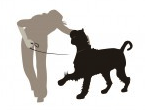
This exercise will not necessarily make your dog walk nicely on a leash, but with repetition and practice your dog will learn that being next to you is good and he will start to do it more often.
Leash training your dog exercise 3:
Pulling on the leash leads nowhere.
This exercise is a little grueling so my recommendation is that you think about it like a game. You are going to play "Red Light, Green Light" to teach your dog to stop pulling on the leash and walk nicely.
Like
working on self control, this exercise does not require the use of
treats. Being able to continue walking down the path will be the reward.

Step 1: Start walking naturally, try a brisk pace. As soon as you feel the leash tightening, STOP (Red light when the leash is tight). Do not pull on the leash yourself! Just stop walking.
Step 2: Wait for your pet to look at you or loosen the tightness in the leash. As soon as this happens start walking again (Green light when the leash is loose). The most important concept here is timing. As soon as the leash becomes a little loose, Mark! and continue walking.
Usually, the leash will become loose when your dog: looks at you, start to turn around, starts to sit or takes a step backwards. If you wait until your dog sat completely or turned around and came to you to Mark! and continue walking, the walk will be choppy and your dog may instead think that he is required to sit to keep walking. Your goal is to convey to your pet that loose leash is needed to keep walking.
Step 3: Repeat many times. Be patient, think about it as a game! I recommend you do many short sessions a day (5-10) in the beginning, but keep them short.
Tip 1: Practice this on your way back, when your dog is tired, then progressively work backwards.
Tip 2: Pay attention to your dog and work on your timing. If you stop, and get distracted and fail to Mark and keep walking when the leash is loose, your dog will not understand what is going on. The same concept applies while walking. If you walk for several steps and then remember to stop because your dog is pulling on the leash, he won't understand that STOP only happens when the leash is loose.
Recommended tools:
I truly hope the exercises above help you and your dog enjoy walks better. Sometimes leash training a dog requires a few extras to speed up the process. Here are my top recommendations and why they are good options.
 |
No-Pull Harness
If you haven't tried a no-pull harness before, then order it today! My students report to me saying "It's magic!". The no-pull harness is designed to work with (not against) your dog's opposition reflex. All dogs have this reflex, basically when they feel pressure somewhere in their body they need to push against it. That's why most dogs choke on a regular collar or pull like crazy with a regular harness. The key to the design is the fron-clip. It gets a little bit of time to get used to it but it works wonders. |
 |
Easy to Use Treat Pouch I did mention taking treats out with you during walks. You can bring the treats in a bag or box but you will find out soon enough that its very uncomfortable to get a treat at the moment you need it and not accidentally toss everything to the ground. This RoyalCare Silicone Dog Treat is very easy to use with one hand, easy to wash and close to prevent your dog from stealing any food! |
 |
Healthy and Natural Dog Treats The outside world is very distracting for your dog. That is why you will need high value treats! You can make them on your own, use natural food from your house or buy them if you don't want the hassle. I do, however, recommend that you use super yummy natural treats and Stewart Pro-Treat, Freeze Dried Dog Treats are a great option. They are natural, yummy and dry! |
Need more help walking your dog?
Dog Leash Training: Damage Control!
If your dog is completely our of controls, barks at other dogs and it's impossible for you to even try the exercises mentioned before. Then, this article will help get to a better place during walks. | ||
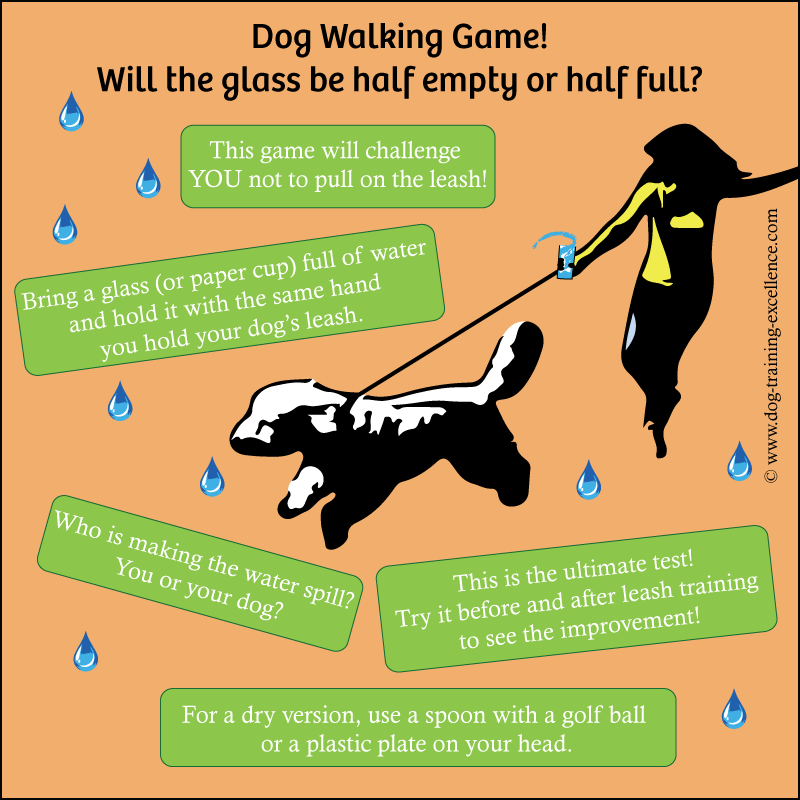 |
Dog Walking Games!
Want to have a little fun while you teach your dog to walk nicely on a leash? This article gives you some ideas for games you can play with your dog during walks! | |
Dog Walking Tips
Get more tips and advice on leash training a dog with positive and effective methods! |
Hope you found this article helpful. You can tell us about your experience in the box below.
Enjoy walking with your dog!
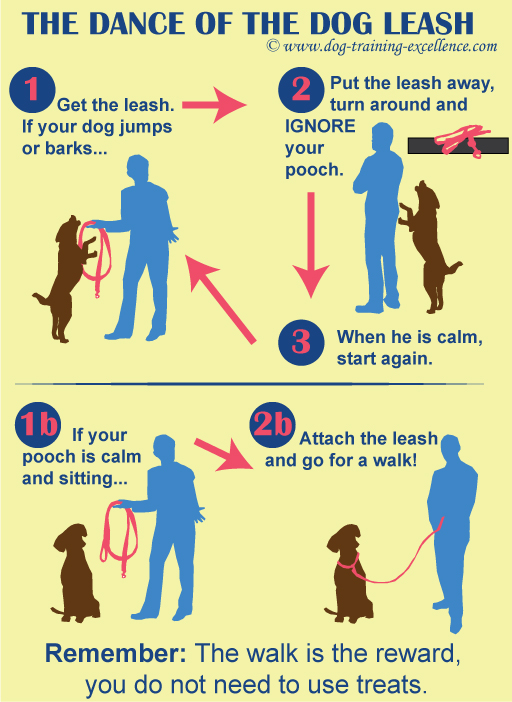
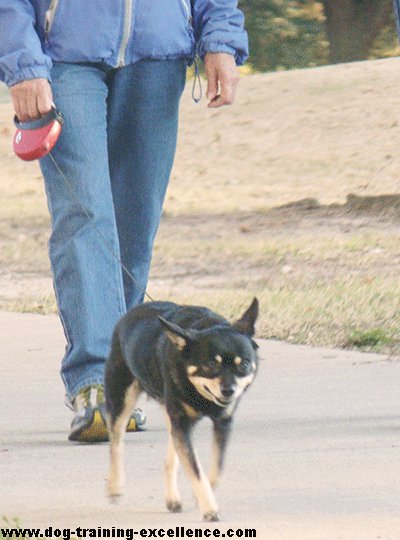
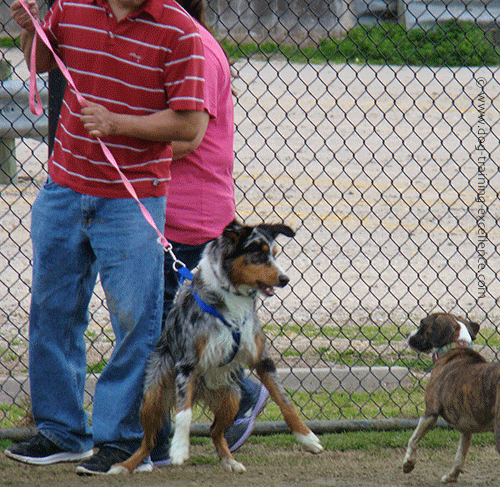
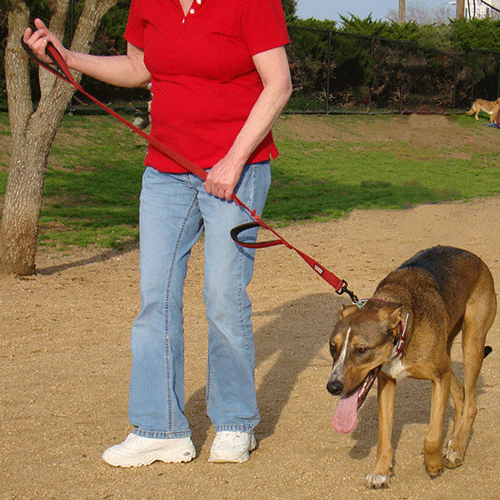

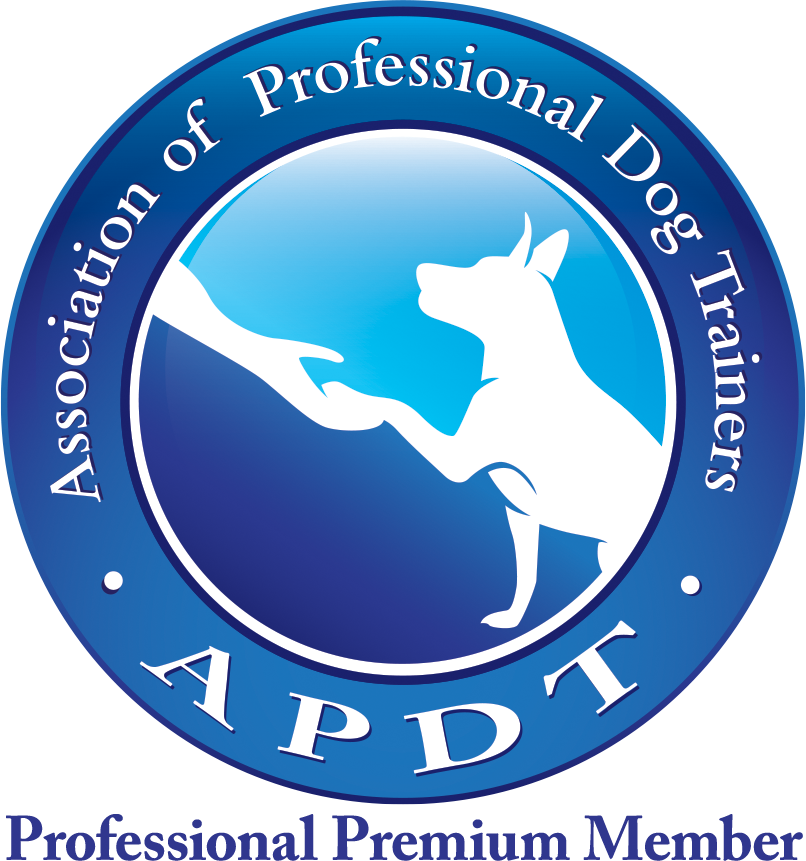


New! Comments
Questions? Anecdotes? Tips? Leave me a comment in the box below.